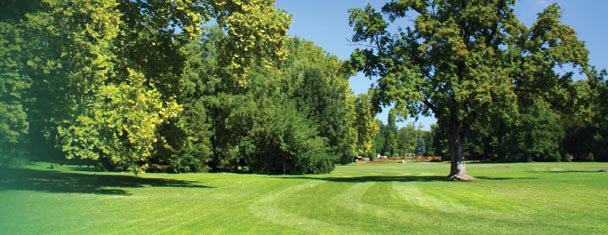|
|
|
 |
 |
 |
The Sabre Septic SystemOur Saber Septic system is a simple, cost-effective solution for septic problems. The Saber Septic converts an existing septic tank into an aerobic treatment system and pumps the treated water out of the tank to the drainfield. By aerating the tank, we eliminate the solids and organics that plug the soil in the drainfield and cause it to fail. By pumping the treated water out of the tank, we eliminate sewage backups in your home, especially during heavy rains when the saturated drainfield wants to flow backwards into the tank. No one else provides this complete solution in such a low-cost package. If you are a homeowner having problems with sewage ponding in your yard or running off your property, our Saber Septic system can normally repair this problem without digging or having to replace your drainfield. By cleaning up the water and aerating it, we can break down and eventually eliminate the clogging biomat in the drainfield that won't let the water move through the soil. Since we pump the treated water out of the tank to the drainfield, we'll keep water from backing up in your home as soon as the system is installed, especially during heavy rains when your drainfield is saturated. No other system can do this without adding an expensive pump tank after your septic tank. If you are having backup problems and have been having your tank pumped every time it rains, the Saber Septic system will eliminate this. You will only have to have your tank pumped when the solids fill the tank, which varies from household to household , but should never be more than once every couple years. This allows you to schedule the pumping and get a better rate, and not have to worry about finding a pumper to come out in the middle of the night, on holidays or weekends. Why Do Septic Systems Fail?Scientific studies have shown that thousands of septic systems are failing or backing water up into homes. Why does this occur? The main reason is the soil in the drainfield becomes plugged with solids and will not allow water to pass through it, or slows it down so much the water backs up into the home. A conventional septic system contains a septic tank followed by a soil absorption field (drainfield), which work together to make sure sewage is treated properly and does not become a health or environmental threat The conventional septic tank was developed in the late 1800's and provides only primary or basic treatment of the sewage. The function of the septic tank is to allow the solids in sewage to settle to the bottom of the tank, and the fats, oils and grease (FOG) to float to the surface. The "grey" water from the center of the tank flows out of the septic tank and into the drainfield. The grey water is distributed throughout the field and is treated by microbes in the soil as the water flows through it. The soil has to treat the septic tank effluent to remove organic material (BOD), total suspended solids (TSS), fats, oils and grease (FOG), and pathogenic (disease causing) organisms in order to make the water safe to be returned to the environment. The effluent from a conventional septic tank contains levels of BOD, TSS, FOG and pathogens that are too high to be released directly to the environment. Over time, these organic materials, solids and FOG from the septic tank will accumulate in the soil pores of the drainfield and plug it up, preventing water from moving through the soil. The drainfield fails or greatly slows down and water then backs up into the house or pools on the surface of the ground. If you notice green strips in your yard over the drainfield, your system is in danger of failure. A conventional septic tank, because it is designed only for basic treatment, will continuously discharge solids, organics, and FOG to the soil absorption field. Over time, this loading will impact the soil and will eventually cause the system to slow down or fail. According to Michigan State University, "Most septic systems will fail sometime. These systems are designed to have a lifetime of 20 to 30 years, under the best conditions. Eventually, the soil around the absorption field becomes clogged with organic material, making the system unusable". So what can you do to prevent the soil from plugging and septic systems from failing? The best solution is to treat the water more efficiently than the septic tank can, and limit the amount of pollutants being sent to the drainfield. There are many systems on the market that will provide better treatment, but they are complicated, expensive, and require a lot of effort and expense to operate and maintain. What can you do if your septic system has slowed down or failed? Well, in some cases you could replace the drainfield with a new one if you have enough land. This of course will require your whole yard to be dug up and will be a costly fix. It will also just postpone a future failure as you will still be loading the new drainfield with septic tank effluent. So how do you convert the anaerobic septic tank into an aerobic treatment system? There are several companies marketing an air pump and diffuser system that will convert the septic tank into an aerobic tank in order to repair the drainfield. These systems typically include an air pump or blower that compresses air and disperses it into the septic tank via a diffuser. The diffuser spreads the air out into the water to provide a good transfer of oxygen and to mix the air into the water. These systems usually include piping to connect the diffuser to the air pump, and possibly a case or cover for the air pump to protect it from the weather. These septic tank aeration systems are a good first step as they convert the septic tank from an anaerobic process to an aerobic treatment system, but they also have one large drawback. These systems must aerate the septic tank continuously so that the contents of the tank are mixed and oxygen is transferred completely throughout the tank. These processes are called complete mix aeration systems. The problem with these type of systems is that the mixed contents of the tank (we engineers call this the “mixed liquor”) is full of solids and bacterial biomass. In a normal wastewater treatment plant, this mixed liquor is allowed to settle in a separate tank so the biomass and solids sink to the bottom and the clear water is taken off the top. These septic aeration systems don't have a settling process. When water from the house enters the tank, it displaces an equal volume of the mixed liquor out of the tank and to the drainfield. So the drainfield is receiving aerated water, but the water is full of solids and biomass that will again eventually plug the soil pores in the drainfield. Some companies selling septic tank aeration systems also include a process for feeding bacterial supplements into their aeration unit within the tank to assist the naturally occurring bacteria. They claim that these proprietary bacteria improve the treatment process and clean the water better and faster. You don't need to buy bacteria. All the bacteria needed to treat sewage is already in the sewage itself. All you need to do is add air to begin the treatment process. You might as well shred some dollar bills and dump them into your septic tank as to buy these “bugs in a bag”. These systems that aerate and feed bacteria are typically called aerated bacterial generators or ABG’s. Again, since they are complete mixed systems they suffer from the same basic problem as the septic tank aeration systems; that of sending solids and mixed liquor directly to the drainfield when water enters the tank. Another big problem with the current septic aeration systems on the market is they don't prevent water from backing up into the house, especially during heavy rains when the drainfield is saturated. These systems typically rely on gravity flow from the house into the septic tank and out into the drainfield. Some more advanced systems may have a pump tank after the septic tank that pressure doses the drainfield and eliminates this problem, but most do not. During heavy rains the typical drainfield will become saturated with water and this water will flow backwards into the septic tank from the drainfield. The septic tank is always full of water so there is no place for this backed-up water to go except into your house or out of the tank and onto the ground. This is a major problem that standard septic aeration systems don't address. |